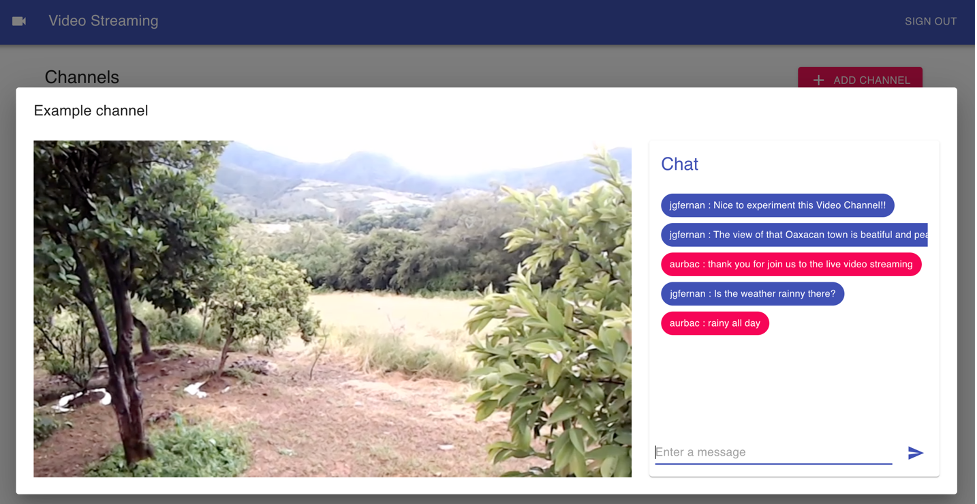AWS for M&E Blog
Tag: AWS Elemental MediaLive How-To
How-to: Build a video-chat application for live streams using AWS Amplify and AWS Media Services
In this post, we are going to build a video-chat web application. For front-end hosting and backend resources, we’ll use AWS services like AWS Amplify, a set of tools and services that help front-end web and mobile developers build scalable full stack applications. And by using AWS Cloud Development Kit (AWS CDK), an open-source software […]
How to live stream pre-recorded video using AWS Elemental MediaLive
In this blog post I walk you through how to live stream pre-recorded videos using AWS Elemental MediaLive. This use case is ideal for customers who want to retain control of their messaging by pre-recording their videos and reach a larger audience using multiple social channels like Twitch, YouTube, and Facebook. In 2020, due to […]
Automatically compare two videos to find common content
Comparing two videos to determine what is common and what is different between them is useful in many ways. The ability to find common content across two video sources opens up a number of interesting possible applications, including: Searching third-party videos for unauthorized use of your content Monitoring a pair of video streams to ensure […]
Quickly create a live streaming channel with AWS Elemental MediaLive Workflow Wizard
There is a growing need for organizations of all types, as well as individuals, to stream video to mobile viewers or a website. AWS Elemental MediaLive offers an automated Workflow Wizard to help create a live streaming workflow in just a few clicks. Now educators, marketers, internal corporate communications teams, and others can easily share […]
How to: Delivering high-profile live video streams using AWS Media Services
Introduction In a previous Media Blog series, we provided several examples of sophisticated workflows using AWS Media Services. In this post, I demonstrate a workflow that delivers a basic HLS livestream with resiliency for high-visibility events. Workflow overview This workflow uses multiple levels of redundancy to eliminate several single points of failure that might take […]
Automate broadcast video monitoring using machine learning on AWS
Monitoring service providers for broadcast and over-the-top (OTT) livestreams perform a large number of quality checks. These range from low-level signal errors to high-level issues like content errors. Traditional live media analyzer software focus on quality checks at the signal level, such as the ETSI TR 101 290 Priority 1 and 2 checks. Higher-level quality checks, such as […]
Build a reliable HLS live channel with AWS Elemental MediaStore
For resilient live streams, you usually have two encoders, which creates two master manifests. However, that on its own is not enough. If one of the encoders suffers a failure – let’s say encoder 1 – the manifests for encoder 1 becomes stale (no longer updated), while encoder 2’s manifests and A/V segments continue to […]
Building interactive live video experiences with Amazon IVS and Videoflow
Amazon Interactive Video Service (Amazon IVS) helps developers to quickly create low latency, interactive live streaming experiences. Based on the technology behind twitch.tv, IVS channels are fully managed, low latency live streams that remove much of the heavy lifting from integrating encoding, origination, content delivery, and playback. Since launch, builders have been elated with the […]
Enhance your Android ecommerce app with Amazon Interactive Video Service
The internet has drastically changed the way that many people around the world shop. Although online shopping can be more convenient than shopping in-person, the human touch of a retail experience can be difficult to recreate in a website or app. As stores expand their online presence, some have turned to live, interactive video streams […]
How to set up a resilient end-to-end live workflow using AWS Elemental products and services: Part 4
In this series: Part 1: Single-region reference architecture deployment walkthrough: The Fundamentals Part 2: Single-region reference architecture deployment walkthrough: Advanced Workflows Part 3: Multi-regions reference architecture deployment walkthrough: Advanced Workflows Part 4: High-Availability Advanced Workflows with Automatic Failover (this post) High-Availability Advanced Workflows with Automatic Failover The first three parts of this blog series described […]









